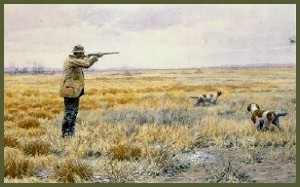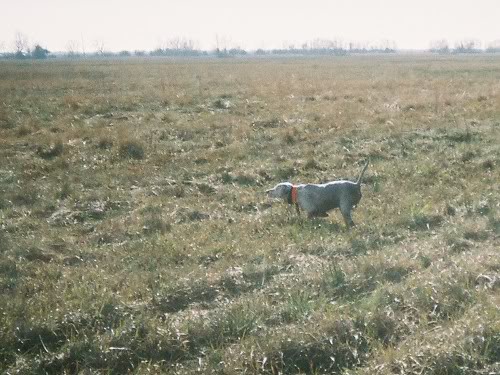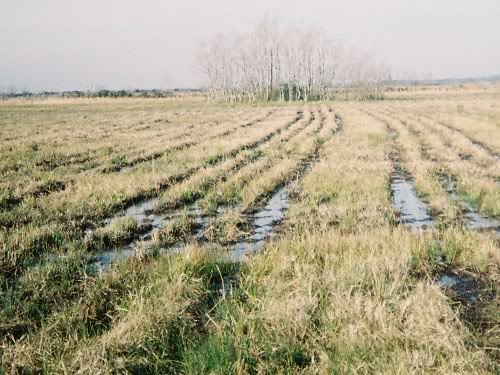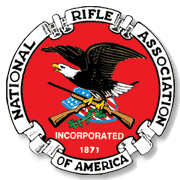|
Reflections on Texas Snipe
By 1971snipe

I shot the first snipe I ever saw. Pointed out to me by my Dad while goose hunting, I dropped it with a 20-gauge load of Remington Peters No. 4s. Our total bag that day, in fact, was 1 goose and 1 snipe. But I never knew how good I really had it here in southeast Texas until quail hunting one day; and it was on that day that I became educated about snipe.
The hunting party consisted of my Dad, his cousin Truett, and myself, along with a pointer named Lucky and a setter named Cotton. We were hunting along fencerows, levees and fallow fields, with limited success - the dogs had pointed only one covey, as well as an armadillo and a snake, as I remember. Straying over into an adjoining rice stubble field, Truett promptly flushed a snipe and bagged it. Dad and I quickly joined in; and the three of us spread out, ignoring the dogs momentarily, and walked slowly through the field, flushing snipe after snipe, exhausting most of our shells in a matter of minutes, with only a few birds to show for the effort. Dad and Truett had each bagged four or five, which was double my bag, plus one or two. And so began my fascination with this bird, a fascination that has lasted some 35+ years, now.
The official snipe season in Texas typically begins late October or early November, and runs until early to mid-February. This past season began November 4, 2006, and ended February 18, 2007, with a daily limit of 8 birds. I will see the earliest migrants in September during the dove season; but by far, the bulk of the birds do not appear until December, when from early morning duck blinds, flocks (or "wisps" if you prefer the old name) containing 25 or more snipe can be seen flying overhead. And for me, late December or early January is typically when "my" snipe season begins in earnest. Cold fronts are frequent, temperatures are cooler, skies are a bit darker, and the ground wetter; and when the snipe are located, they will likely be found in number.
I'm sure there may be some incidental snipe that have spent the summer here for various reasons, just as the occasional non-native duck and goose have been known to do; but as far as I have ever been aware, snipe are entirely a migratory bird for southeast Texas. For purposes of this essay, by the way, Southeast Texas is defined as consisting mostly of Chambers and Jefferson Counties, roughly bordered on the north by the southern edge of the "Big Thicket", on the west by the Trinity River, south by the Gulf of Mexico or its bays, and on the east by the Sabine River and its estuaries. However, what can be said about southeast Texas can also very well apply to southwest Louisiana.
Snipe, by-and-large, are found in moist soil areas such as shallow marshes, pastures, fallow fields, and harvested rice fields - areas collectively referred to as "flooded flats". All of the above exist in southeast Texas in good measure, although with restricted accessibility. In fact, all of my snipe hunting has been done on private land, accessed by way of either annual lease or landowner permission, but mostly the former. Several large state and federal wildlife management areas and refuges do exist here, but to my knowledge are only open for waterfowl hunting. There are some public lands available in east Texas 100 miles or so to the north, including both state wildlife management areas and national forests - and we have flushed an occasional snipe there when woodcock hunting. But, by the time winter settles in on Texas, most if not all snipe are settled in near the coast.
For a slower, more methodical hunt, typically flushing singles or doubles, I go to shallow marshes where sporadic clumps of salt grass, or "marsh hay", stand 2 to 3 feet tall. But for fast action, where flushes are nearly continuous, and snipe can number in the hundreds, find a moist soil area containing scattered flooded spots, such as a rich pasture or fallow field. It has been my experience over the years, that large concentrations of snipe are found in the same general areas, often the same fields, year after year, suggesting that such "hot spots" become traditional for each generation - just the same as wild ducks and geese that return each winter to particular marshes, or even a particular pond or ditch.
This phenomenon was found to be particularly true this 2007 winter season. One pasture we hunted consistently held hundreds of snipe; and when all things were right (especially the hunter), I could walk from the gate to the far side of the field, which took 30 to 40 minutes, and bag a limit of 8 snipe, usually with 12 to 16 shots. Accomplishing this required the work of an experienced, well-heeled retriever, so that no time was spent (by the hunter) searching for downed birds. Indeed, my 12-yr old chocolate lab (Ruby) enjoyed an exemplary 2007 winter season, hopefully not her last.

But, back to hunting methods. Regardless if I'm in the marsh or an open field, I like to walk through an area slowly, and occasionally pause for several seconds, many times thereby causing a snipe to flush behind me, after having just allowed me to walk right past him or her. This in fact has become one of my favorite shots, hearing the flush behind me, spinning around, locating the bird, and then taking the shot.
I have found, as many writers of yesteryear tell us, that walking with the wind at my back typically provides the easiest shots. In such an instance, snipe launch into the air against the wind, quartering either right or left, and thus presenting a crossing shot; and hence faster reflexes are (theoretically, anyway) not as necessary as when jumping straightaway birds.
On the other hand, however, it is my humble opinion that a more challenging shot does not exist, than a freshly jumped straightaway snipe at 40 yards. They spring forth with their unique and very recognizable "scaip" cry, seeming to pause ever-so-slightly before employing their countermeasures - a swift side-to-side zig-zag motion, then sky-rocketing upward, sometimes adding a few zigs and/or zags for good measure before gaining its cruising altitude.
Seldom do I run across a hunter, much less anyone else, that knows what a snipe is. Most know a snipe as the fictitious bird of many a childhood prank. Some know the word "snipe" as a type of sailboat, or perhaps something sailboat-related. And I've even met some older men that referred to a discarded cigarette as a snipe. "I could catch a snipe before it hit the ground", stated one old-timer, recalling his days as a youngster during the Great Depression era.
Until I ran across The Snipe Hunters Forum during a casual internet search one day, I had only personally known of two other hunters besides myself that went hunting for, as one of them states, "the sole purpose of shooting snipe".
An added note, of the three dedicated snipe hunting members of our hunting club, including myself, all own pointing dogs; and all of us agree that the use of these types of dogs in the open flats areas I have described above are not recommended. I do include a picture of my pointer locked onto a snipe in this essay; however, with scent essentially covering the field, birds flushing in number, almost continuous at times, and at various distances, the situation is less than ideal if not harmful, especially for a young still-learning bird dog. There are some folks that will argue this point, and to them I say feel free to do it and more power to you; but it did not work for us, especially when we wanted the dog to also hunt woodcock.

Concerning shotguns, my preference is and always has been the side-by-side, with chokes modified and full. As in all hunting, however, the choice of shotgun style and gauge are ultimately personal choices for the individual.
And, finally, all things considered - the hunt, the shooting, the dogs, the weather, the camaraderie; and at the end of the day, the aroma of snipe being quickly sauteed in brown butter and wine, then simmered to perfection and accompanied by a bed of rice and a stout red wine. What more could an outdoorsman desire?
1971snipe
June 18, 2007

God Bless America!

We proudly support the NRA
Copyright 2001-2025 The Snipe Hunter
|


